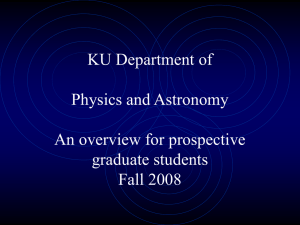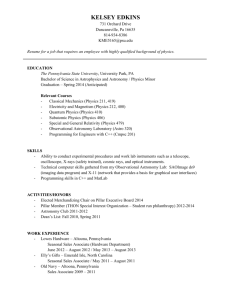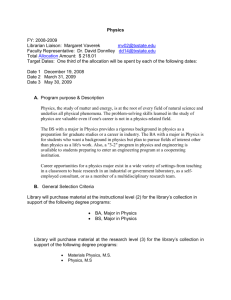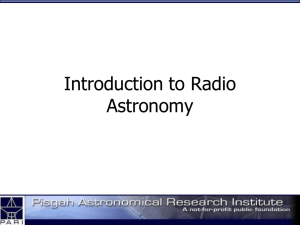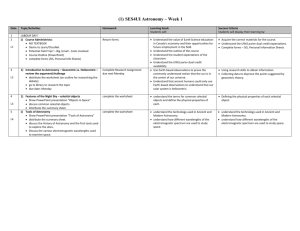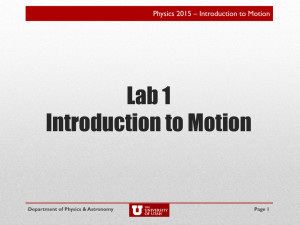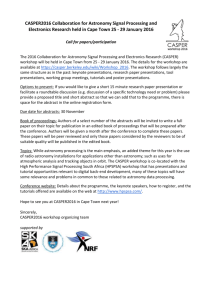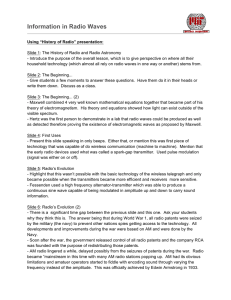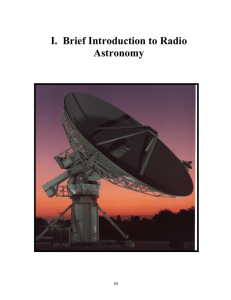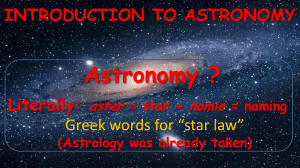Radio Astronomy: Listening to the Sky
advertisement
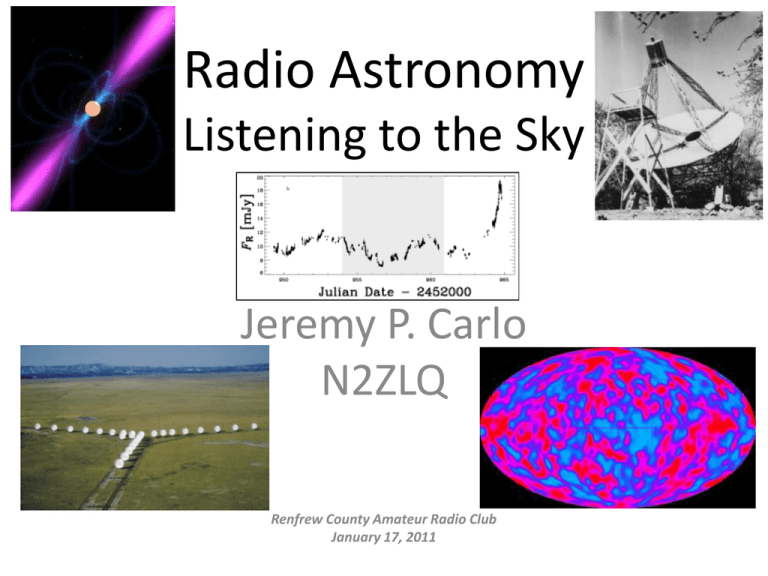
Radio Astronomy Listening to the Sky Jeremy P. Carlo N2ZLQ Renfrew County Amateur Radio Club January 17, 2011 The electromagnetic spectrum • Theory: Maxwell (1860s): – Light as special case of EM The electromagnetic spectrum EM radiation characterized by wavelength l frequency f energy E & constant speed c Ranges: Radio Microwave Infrared Visible Ultraviolet X-rays Gamma rays The electromagnetic spectrum • • • • Infrared: late 1700’s/early 1800’s X-rays: Roentgen – cathode rays Gamma: Curies et al. – radioactivity Radio: experiments start with Hertz (1880s) – Transmission/reception of radio waves – Then Marconi, Tesla, etc. • What about using radio waves for astronomy? Production of Radio Waves (terrestrial) currents in wires • Crossed E, B, fields… Atomic resonances • Low-energy electronic transitions • Rotational/vibrational modes • Magnetic (e.g. hyperfine) interactions Synchrotron radiation • Acceleration of charged particles – Strong B fields, high energies! Or, other types of EM radiation that have been Doppler shifted… EM Radiation in Astronomy Only some EM radiation gets through the earth’s atmosphere. • “Window” for visible light (some IR also) • Another window in radio! • Pretty much everything else requires satellites (a little can be done with high-altitude balloons) EM Radiation in Astronomy Up until ~1900 only visible light astronomy was done! But there’s so much more to “see!” The Birth of Radio Astronomy • First astronomical radio observation – Karl Jansky, 1932-1933 (Bell Labs) – Investigate sources of radio noise – Steerable phased array at 20.5 MHz – Lots due to thunderstorms – Found signal that repeats every day (not exactly… 23h 56m) – Now identified with galactic center (supermassive black hole!) Karl Jansky, 1905-1950 The Birth of Radio Astronomy • Bell Labs was satisfied with Jansky’s identification of QRN sources… no more studies needed! • And… The (Re)birth of radio astronomy • Grote Reber, W9GFZ • Built a 9m parabolic dish in his backyard in 1937 • Conducted first all-sky radio survey, 1941 • After his work came a postwar boom! Grote Reber (1911-2002) Later advances • Increased wavelength range – & integration with studies at other wavelengths: visible, IR, x-ray, gamma • Larger dishes = more sensitivity • Interferometry = better angular resolution • Dual nature of radio waves: they probe both sedate, slow processes, and some of the most energetic phenomena in the universe! Radio Astronomy Today • Many observatories spanning the globe Arecibo, • Large-area dishes for high Puerto Rico sensitivity • Extremely high resolution via interferometry • Coordination between observatories for continuous observations • Coordination of observatories at different wavelengths! • Tracing of solar activity crucial to “space weather” forecasting for the health of satellites & electronic Very Large equipment! Array (VLA), New Mexico Mapping Planets with RADAR • Venus: surface obscured by permanent clouds Radar map by Magellan satellite Visible light image Mapping Cold Gas in Galaxies M31 visible light image M31 in radio at CO resonance 115 GHz • Trace out star formation in galaxy • Trace out dynamics of gas clouds Doppler map Mapping the Stellar Lifecycle Pulsars: Timekeepers of the Universe • Neutron star: theoretical idea from Zwicky (1930’s) • Observation: Jocelyn Bell Burnell & Antony Hewish, 1967 Nobel Prize (Hewish), 1974 Supernova Remnants Casseiopeia A Supernova Remnant Tycho’s Supernova Remnant • Radio emission from shock front: expanding material striking interstellar medium • Radio is the best tool for detecting new SNRs! The Galactic Center • At visible wavelengths this region is obscured by dust! • Sgr A = galactic center (supermassive black hole) The Galactic Center • Multiwavelength overlay • red = radio, green = infrared, blue = x-rays Radio Galaxies: Supermassive Black Holes Centaurus A (NGC 5128), overlay of radio and visible images PKS 2536-61. Radio (red), optical (blue). The CMB: Echo of the Big Bang • Key prediction of Big Bang Theory • Peak ~ 200 GHz • Penzias & Wilson, 1964 1976 Nobel Prize • COBE (1989) 2006 Nobel Prize, Smoot & Mather • WMAP (2001), Planck (2009) The size scale and intensity of these fluctuations place stringent limits on cosmological models. Tuniverse = 13.7 Gy SETI: The Search for Intelligent Life • Proposed ~ 1960: use radio/microwave frequencies to listen for signals from extraterrestrial civilizations, or send signals for them to receive! • Jury’s still out… ? Summary • Radio provides a valuable and unique source of information about the universe: – Radar mapping of moon & planets – Following solar activity – Tracing cold gas clouds & star forming regions – Seeing “through” dust & gas to distant objects – High angular resolution through interferometry – Detecting expired stars & stellar remnants – Precision cosmology via the CMBR – SETI
